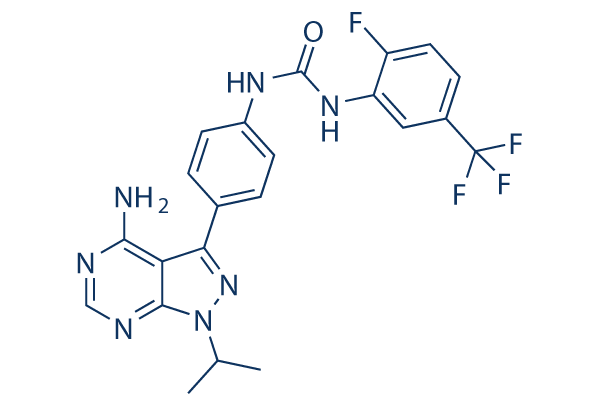| DC70734 |
RET agonist BT44
|
RET agonist BT44 is a novel, specific RET agonist, promotes RET phosphorylation and selectively activates downstream cascades in the cells expressing GFL receptors.BT44 has no effect on TrkA and TrkB receptors; In GFRα1/RET expressing cells, 10–50 µM of BT44 increased the activity of luciferase reporter by approximately two fold (P<0.0001).BT44 dose-dependently stimulated neurite outgrowth from DRG sensory neurons and its efficacy was comparable to that of ARTN.BT44 alleviated mechanical hypersensitivity in surgery- and diabetes-induced rat models of neuropathic pain. |
| DC48424 |
Enbezotinib
|
Enbezotinib, an inhibitor of RET, can inhibit the RET autophosphorylation. Enbezotinib can be used for the research of cancer. |
| DC40968 |
LUN09945
|
LUN09945 is a potent RETV804M kinase inhibitor. LUN09945 was first reported by Rebecca Newton et al (Compound 13, in ACS Med Chem Lett. 2020;11(4):497-505). This product has no formal name at the moment. For the convenience of communication, a temporary code name was therefore proposed according to MedKoo Chemical Nomenclature |
| DC11450 |
Selpercatinib(LOXO-292)
|
Selpercatinib is a RET kinase inhibitor extracted from patent WO2018071447A1, Compound Example 163, has an IC50 of 14.0 nM, 24.1 nM, and 530.7 nM for RET (WT), RET (V804M) , and RET (G810R), respectively. Antineoplastic activity. |
| DC7763 |
NVP-AST487
|
AST 487 is a RET kinase inhibitor with IC50 of 880 nM, inhibits RET autophosphorylation and activation of downstream effectors, also inhibits Flt-3 with IC50 of 520 nM. |
| DC11479 |
BLU-667 (Pralsetinib)
|
BLU-667 (Pralsetinib) is a highly potent, selective, next generation RET inhibitor with IC50 of 0.3-0.4 nM for WT RET, RET mutants V804L, V804M, M918T and CCDC6-RET fusion. |
| DC10633 |
AD80
|
AD80, a multikinase inhibitor, shows strong activity against human RET, BRAF, S6K, and SRC but were much less active than either AD57 or AD58 against mTOR. The IC50 value for RET is 4 nM. |






















